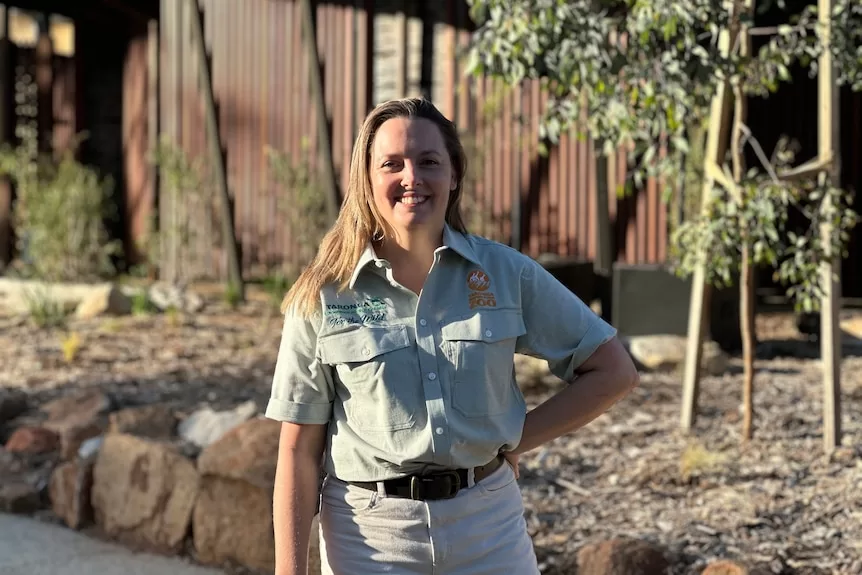Like any 23-year-old, Mackenzie is relishing having a home all to himself.
The Sydney-born platypus is the sole resident — for now — of a new $12.1 million platypus exhibit and refuge that opened at Taronga Western Plains Zoo in Dubbo on Tuesday.
Known as Platypus Rescue HQ, the facility has three primary aims — rescue, research and rehabilitation.
“Our refuge facility … can hold up to 65 platypuses in times of drought, bushfire or flood,” Taronga Zoo wildlife conservation officer Phoebe Meagher said.
“We’ve got our state-of-the-art research facility, where we’ll be able to learn about things like reproductive success, so we can forward-plan for conservation breeding programs, and also … when we should rescue platypus in the wild.
“And we also have our semi-aquatic, semi-wild pre-release facility, which allows the platypus to build fitness in a naturalistic environment before being released.”
Local extinctions already occurring
The zoo hopes the centre can help mitigate the massive fragmentation of platypus populations happening across the entire east coast of Australia.
“We’re seeing up to 40 per cent range reductions from their original distribution and we’re seeing local extinctions,” Ms Meagher said.
“In the Royal National Park, we recently released platypus back to the wild that had not been seen there for over 50 years.”
Jointly funded by the NSW government, Taronga Conservation Society Australia and philanthropic donors, the new facility is also open to the public, giving the zoo’s 300,000 annual visitors a chance to meet Mackenzie, while seeing conservation work in action.
Minister for Climate Change and the Environment Penny Sharpe said the facility was all about “preparing for the worst while hoping for the best”.
“We hope that in understanding a little bit more about the platypus — as well as them being very cute and fascinating to look at — that we also take on our responsibilities … of caring for the environment and making sure that they survive into the future,” she said.
Zoo director Steve Hinks said with the elusive species listed as “near threatened”, he was pleased by the effort to help it recover.
“I personally do not ever want to consider a future without platypuses — put unfortunately, if we do not act and we do not do something about it, then that is a future that could potentially occur,” he said.
“It’s important for organisations such as ours to take the lead and to do everything that we can to save this iconic species and give it a brighter future.”
Get our local newsletter, delivered free each Friday
